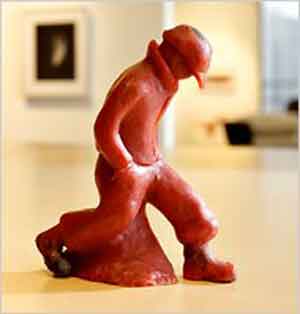SINTHOME/Theopraxesis
Jacques Lacan, The Sinthome, Seminar XXIII, 1975-76
Lacan offered seminars annually from 1952 to 1980. Lacan’s seminars make an important contribution to the Theory in the CATTt guiding the invention of Konsult in general, and theopraxesis in particular. In this later seminar Lacan makes explicit some connections with the sources of our project that until now operated as assumptions. The first of these relationships is outlined here.
Capabilities.
Real, imaginary, and symbolic strikes me as just as valid as the other triad from which, going by Aristotle, the juice was extracted to compose man, namely, will, intelligence, and affectivity. (Sinthome 126).
As discussed in the book, Konsult: Theopraxesis, one function of our experiment is to support a transition from literacy to electracy in education (to negotiate a passage from one apparatus to another). The pedagogy is centered on egents, the ones supposed to learn, appropriating the resources of Arts & Letters curriculum as means for students to undergo and develop their capabilities—their faculties, powers, virtues, potentiality—identified in the tradition dating from the invention of literacy in the Athenian academies as the embodied intellectual virtues: Theoria, Praxis, Poesis (theory, practice, poetics; thinking, doing, making; understanding, will, imagination). Kant’s Three Critiques take up this thread. The Third Critique promotes Aesthetics to equal status with Science and Morality, to propose aesthetic judgment as mediator bridging the abyss separating science and religion. Hannah Arendt took up Kant’s project as the best option for a Public Sphere in industrialized mass society after Auschwitz.
The importance of Lacan’s contribution is apparent in this context. His mnemonic image of the embodied virtues is a bag (the body, mathematically the empty set, the one) tied closed with cord (string, ficelles). RSI (playing on rhymes and puns with “heresy” and “airesis” or choice)—Lacan’s updating of the three faculties—Real, Symbolic, Imaginary—interrelate topologically, entangled in a way that Lacan explores through knot topology, with the Borromean knot specifically manifesting the sinthome (unique symptom). We have argued elsewhere that the sinthome helps account for the image of wide scope. One implication to be tested in our experiments is that in experience we encounter the apparatus stack (the popcycle) as entangled, knotted, in a manner articulated by topology. Lacan supplies one guide for the Kant-Arendt project, that we are calling theopraxesis: the virtues and their institutions already are fully integrated in a potential state (dunamis, but in a condition of privation, steresis). The “symptom” of this virtual condition is the polemos or seemingly irreducible conflict apparent in relations both macrocosmic and microcosmic of civilization.
HOGARTH: Line of Beauty
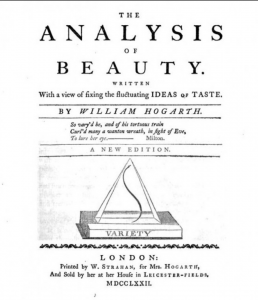 A second affiliation with tradition important to note in this seminar is Lacan’s reference to Hogarth’s curved line of beauty as relevant to the genealogy of his knot topology. This connection makes explicit Lacan’s contribution to the larger question of the gramme, the invention of the plasmatic line in the Paleo apparatus, in continuing service up to the present, now augmented in electracy through animation and digital FX. Sergei Eisenstein cited Disney’s animated film, Steamboat Willie (1928) as a revelation of the new order opened up in media by the plasmatic line. We will have more to say about the ontological properties of this line.
A second affiliation with tradition important to note in this seminar is Lacan’s reference to Hogarth’s curved line of beauty as relevant to the genealogy of his knot topology. This connection makes explicit Lacan’s contribution to the larger question of the gramme, the invention of the plasmatic line in the Paleo apparatus, in continuing service up to the present, now augmented in electracy through animation and digital FX. Sergei Eisenstein cited Disney’s animated film, Steamboat Willie (1928) as a revelation of the new order opened up in media by the plasmatic line. We will have more to say about the ontological properties of this line.
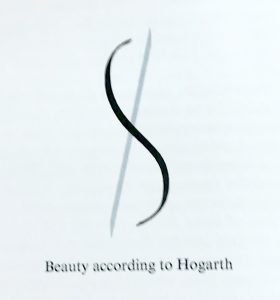
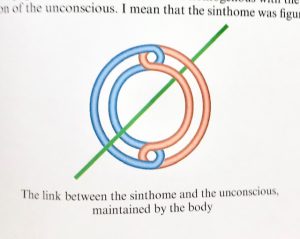
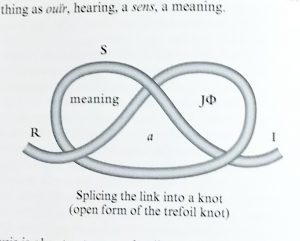
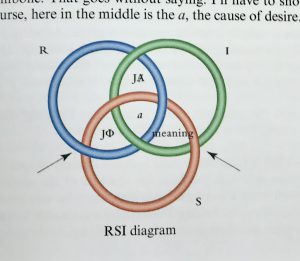
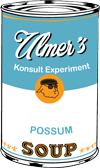
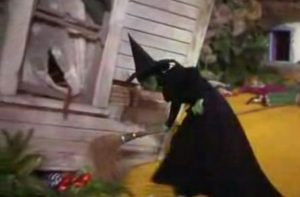 –Scenario. Assuming familiarity with the synopsis of the narrative, we may outline the allegorical import. In general the narrative is instructive of mystorical design in that there is an isotopic rhyming between Dorothy’s world in Kansas and the fantasy world of Oz. The encounter of these two orders is dramatized when Dorothy’s house lands in Oz, crushing the Wicked Witch of the East, whose red shoes Dorothy inherits. The tornado that interrupted a family crisis in Kansas represents Disaster. Dorothy is egent, or soul (psyche) in the allegory, and her journey to find the Wizard to get his advice dramatizes the egent’s actualization of her capabilities in theopraxesis. The three capabilities (virtues, faculties) are represented by the three companions Dorothy meets along the way, the Yellow Brick Road. The three figures embody the significance of the lack articulated in the term “egent” (they lack). The three companions represent the three virtues in a state of privation, Steresis, potentiality not realized (im/potence). Their impotence is a projection of Dorothy’s virtuality, her lack, the condition of any ephebe on the way. The three figures manifest the tripartite system of virtues, but Baum euphemized the assignments somewhat, blending heart and gut. In our appropriation of the story for konsult allegory the alignment with the tradition is clear: Scarecrow wants a brain (Knowledge, Theoria, Head, Rulers); Lion wants courage, so heart (Will, Praxis, Guardians); Tin Woodman’s problem is not his “heart” but his “axe” (enchanted by the witch), which prevents him from loving (having sex). He represents Viscera (Desire, Poiesis, Workers).
–Scenario. Assuming familiarity with the synopsis of the narrative, we may outline the allegorical import. In general the narrative is instructive of mystorical design in that there is an isotopic rhyming between Dorothy’s world in Kansas and the fantasy world of Oz. The encounter of these two orders is dramatized when Dorothy’s house lands in Oz, crushing the Wicked Witch of the East, whose red shoes Dorothy inherits. The tornado that interrupted a family crisis in Kansas represents Disaster. Dorothy is egent, or soul (psyche) in the allegory, and her journey to find the Wizard to get his advice dramatizes the egent’s actualization of her capabilities in theopraxesis. The three capabilities (virtues, faculties) are represented by the three companions Dorothy meets along the way, the Yellow Brick Road. The three figures embody the significance of the lack articulated in the term “egent” (they lack). The three companions represent the three virtues in a state of privation, Steresis, potentiality not realized (im/potence). Their impotence is a projection of Dorothy’s virtuality, her lack, the condition of any ephebe on the way. The three figures manifest the tripartite system of virtues, but Baum euphemized the assignments somewhat, blending heart and gut. In our appropriation of the story for konsult allegory the alignment with the tradition is clear: Scarecrow wants a brain (Knowledge, Theoria, Head, Rulers); Lion wants courage, so heart (Will, Praxis, Guardians); Tin Woodman’s problem is not his “heart” but his “axe” (enchanted by the witch), which prevents him from loving (having sex). He represents Viscera (Desire, Poiesis, Workers).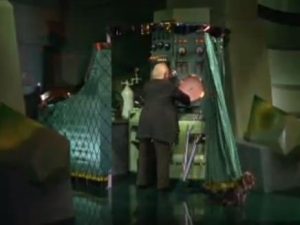 –Wizard. The scene of consultation with the Wizard, when Psyche and her three Capabilities make their requests, shows the full arrangement of apparati and their relationship at the collective level. In this expanded scene, the microcosm/macrocosm individual/collective isotopy is made explicit: Tin Man is Paleo (Family, sexual fertility), Lion is Oral (Church), Scarecrow is Literate (School), Wizard is Electrate (Entertainment). Much theory could be referenced here to support this configuration. To mention Lacan, for example, the Wizard is the Big Other, the one supposed to know, whose hold over us it is the purpose of therapy to dispel. The immediate value of the Oz allegory is to highlight this passage in education, the adventure of learning (dealing with the trials testing Psyche/Dorothy) as actualization of the three capabilities. Equally important is the fact that the Wizard is augmented capability, imagination mise-en-macbine, with the imperative of the allegory being for us to understand how Oz makes able, activates, the three virtues so Dorothy may return home (overcome disaster).
–Wizard. The scene of consultation with the Wizard, when Psyche and her three Capabilities make their requests, shows the full arrangement of apparati and their relationship at the collective level. In this expanded scene, the microcosm/macrocosm individual/collective isotopy is made explicit: Tin Man is Paleo (Family, sexual fertility), Lion is Oral (Church), Scarecrow is Literate (School), Wizard is Electrate (Entertainment). Much theory could be referenced here to support this configuration. To mention Lacan, for example, the Wizard is the Big Other, the one supposed to know, whose hold over us it is the purpose of therapy to dispel. The immediate value of the Oz allegory is to highlight this passage in education, the adventure of learning (dealing with the trials testing Psyche/Dorothy) as actualization of the three capabilities. Equally important is the fact that the Wizard is augmented capability, imagination mise-en-macbine, with the imperative of the allegory being for us to understand how Oz makes able, activates, the three virtues so Dorothy may return home (overcome disaster).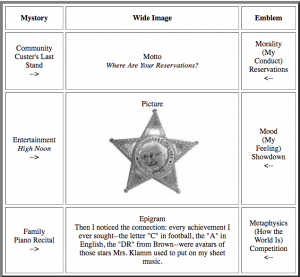 –Tenor (Themata): Catechism. The image on the left is the emblem Ulmer generated from his mystory, leading to design of his wide image in
–Tenor (Themata): Catechism. The image on the left is the emblem Ulmer generated from his mystory, leading to design of his wide image in 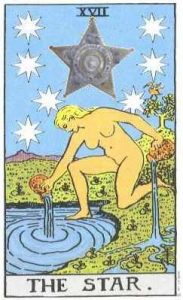 3) The third question is Mood: given the necessity to act in that way, in a world of that character, how do I feel? Wabi-Sabi advises acceptance of the inevitable and appreciation of the cosmic order. Ulmer found his state of mind expressed in High Noon as a fable of duty: despite his contempt for the hypocritical community, the sheriff fought the gang of killers, after which he threw away the tin star. This gesture of discarding the badge of status determined the tin star as the icon of the emblem. In practice it is best to decide which popcycle story supplies the picture, and which question of the catechism that story answers, and the rest of the emblem follows from there.
3) The third question is Mood: given the necessity to act in that way, in a world of that character, how do I feel? Wabi-Sabi advises acceptance of the inevitable and appreciation of the cosmic order. Ulmer found his state of mind expressed in High Noon as a fable of duty: despite his contempt for the hypocritical community, the sheriff fought the gang of killers, after which he threw away the tin star. This gesture of discarding the badge of status determined the tin star as the icon of the emblem. In practice it is best to decide which popcycle story supplies the picture, and which question of the catechism that story answers, and the rest of the emblem follows from there. –How an Image becomes Wide. Koren demonstrates how a detail of the world is selected as a vehicle for a poetic image: for example, a worn shingle on an old hut, with a streak of rust descending from an iron nail. The tenor (theme) of this vehicle is coded in Japanese traditional culture, relative to the wisdom metaphysics of Buddhism, to express an existential insight into time and entropy known as wabi-sabi. “Wabi-Sabi can be called a ‘comprehensive’ aesthetic system. Its world view, or universe, is self-referential. It provides an integrated approach to the ultimate nature of existence (metaphysics), sacred knowledge (spirituality), emotional well-being (state of mind), behavior (morality), and the look and feel of things (materiality)” (Koren, 41). The instruction was not to seek Wabi-Sabi in one’s own experience, but the equivalent, the mood and atmosphere, to find one’s personal version of what was modeled in Japanese tradition. The folk traditions of Blues into Jazz in global Creole syncretism (mufarse into tango, saudade into samba) is central to the thymotic and erotic dimension of world materialized in digital electracy. Koren’s analysis demonstrates how to expand the two-part vehicle and tenor of image into a six-part inventory. Students generated their emblems productive of wide image by answer six questions posed by Koren: three for vehicle; three for tenor. The three questions addressing tenor (themata) are the same three articulated in the catechism of modernism, directing theopraxesis. One implication, to be developed further, is that the system of capabilities is not confined to the Western Tradition, but functions globally across cultures and civilizations.
–How an Image becomes Wide. Koren demonstrates how a detail of the world is selected as a vehicle for a poetic image: for example, a worn shingle on an old hut, with a streak of rust descending from an iron nail. The tenor (theme) of this vehicle is coded in Japanese traditional culture, relative to the wisdom metaphysics of Buddhism, to express an existential insight into time and entropy known as wabi-sabi. “Wabi-Sabi can be called a ‘comprehensive’ aesthetic system. Its world view, or universe, is self-referential. It provides an integrated approach to the ultimate nature of existence (metaphysics), sacred knowledge (spirituality), emotional well-being (state of mind), behavior (morality), and the look and feel of things (materiality)” (Koren, 41). The instruction was not to seek Wabi-Sabi in one’s own experience, but the equivalent, the mood and atmosphere, to find one’s personal version of what was modeled in Japanese tradition. The folk traditions of Blues into Jazz in global Creole syncretism (mufarse into tango, saudade into samba) is central to the thymotic and erotic dimension of world materialized in digital electracy. Koren’s analysis demonstrates how to expand the two-part vehicle and tenor of image into a six-part inventory. Students generated their emblems productive of wide image by answer six questions posed by Koren: three for vehicle; three for tenor. The three questions addressing tenor (themata) are the same three articulated in the catechism of modernism, directing theopraxesis. One implication, to be developed further, is that the system of capabilities is not confined to the Western Tradition, but functions globally across cultures and civilizations.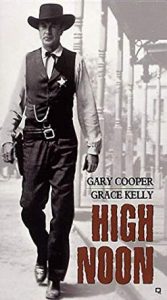 –Poetics: Image expanded into Emblem. The expanded image consists of two registers: material; metaphysical. Working with the narratives generated in composition of mystory, students must commit to one pedagogical object (magic tool), some detail found in at least one of the diegesis of the popcycle, to serve as logo or brand icon for the wide image. In Ulmer’s case (Noon Star), the repeating detail (like the dogs repeating in Momaday’s section III) was a five-pointed star: Family memory (the red star on his sheet music of the march, Garry Owen; Entertainment mythology (the film High Noon, Gary Cooper as Will Kane, discarding his sheriff’s star in the dirt after the gun fight); Community history (“General” Custer’s badge of rank, and Indian name, Son of the Morning Star). The three material questions are: 1) what is the prop/ icon? Ulmer chose the tin star sheriff’s badge to represent this materiality. 2) What are its attributes? (what mood or atmosphere is expressed that distinguishes this icon from its archetype, configuring it specifically for me. The context of High Noon star thrown in the dirt expresses rejection and disgust with the hypocritical authority symbolized in the badge. 3) Archetype: what is the conventional meaning associated with this icon in the archive? (the five-pointed star has an extensive presence throughout many cultures).
–Poetics: Image expanded into Emblem. The expanded image consists of two registers: material; metaphysical. Working with the narratives generated in composition of mystory, students must commit to one pedagogical object (magic tool), some detail found in at least one of the diegesis of the popcycle, to serve as logo or brand icon for the wide image. In Ulmer’s case (Noon Star), the repeating detail (like the dogs repeating in Momaday’s section III) was a five-pointed star: Family memory (the red star on his sheet music of the march, Garry Owen; Entertainment mythology (the film High Noon, Gary Cooper as Will Kane, discarding his sheriff’s star in the dirt after the gun fight); Community history (“General” Custer’s badge of rank, and Indian name, Son of the Morning Star). The three material questions are: 1) what is the prop/ icon? Ulmer chose the tin star sheriff’s badge to represent this materiality. 2) What are its attributes? (what mood or atmosphere is expressed that distinguishes this icon from its archetype, configuring it specifically for me. The context of High Noon star thrown in the dirt expresses rejection and disgust with the hypocritical authority symbolized in the badge. 3) Archetype: what is the conventional meaning associated with this icon in the archive? (the five-pointed star has an extensive presence throughout many cultures).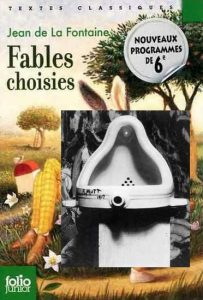 –Fable: What resources are available for inquiry and expression in the conditions after Nietzsche, the history of an error, after the simultaneous withdrawal of the true world and the apparent world along with it? The time is noon (the shortest shadow). What remains is fable, Nietzsche said. What are the possibilities of fable as genre? Duchamp improvised one approach, perhaps not even yet fully appreciated. His Readymades are fables, albeit weak (faible) fables, in that they provide the illustrations only (the emblems, impresas). He intimated his variation on the mode with his most notorious instance, whose title “Fountain” translates “La Fontaine,” antonomasia between common and proper noun, evoking the name of the author of many fables in the common “fountain,” itself a euphemistic title for a urinal. Ulmer’s collage of the urinal with a cover of La Fontaine’s book make the joke explicit. Duchamp’s commitment to the punning bachelor machine logic central to modernism is well known. He acknowledged his attendance at a performance of a stage adaptation of Raymond Roussel’s 1910 novel Impressions of Africa as a turning point in his career (Roussel’s method of composition used generative puns). It has been suggested that some of the Readymades at least are comments on dreams described in Freud’s Interpretation of Dreams, hence that they use rebus methods (visualizations evoking words). Freud noted, for example, that many dreams are triggered when sleepers experience the need to urinate (the dream allows sleep to continue briefly). The text of the fabled fountain is provided by its history, being as it is the most influential (if not the “best”) art work of the twentieth century, including its status as a prank, and all the manipulations Duchamp performed to put the image of La Fontaine into circulation, recorded in Thierry De Duve’s Kant After Duchamp. What is the moral of the readymade fable?
–Fable: What resources are available for inquiry and expression in the conditions after Nietzsche, the history of an error, after the simultaneous withdrawal of the true world and the apparent world along with it? The time is noon (the shortest shadow). What remains is fable, Nietzsche said. What are the possibilities of fable as genre? Duchamp improvised one approach, perhaps not even yet fully appreciated. His Readymades are fables, albeit weak (faible) fables, in that they provide the illustrations only (the emblems, impresas). He intimated his variation on the mode with his most notorious instance, whose title “Fountain” translates “La Fontaine,” antonomasia between common and proper noun, evoking the name of the author of many fables in the common “fountain,” itself a euphemistic title for a urinal. Ulmer’s collage of the urinal with a cover of La Fontaine’s book make the joke explicit. Duchamp’s commitment to the punning bachelor machine logic central to modernism is well known. He acknowledged his attendance at a performance of a stage adaptation of Raymond Roussel’s 1910 novel Impressions of Africa as a turning point in his career (Roussel’s method of composition used generative puns). It has been suggested that some of the Readymades at least are comments on dreams described in Freud’s Interpretation of Dreams, hence that they use rebus methods (visualizations evoking words). Freud noted, for example, that many dreams are triggered when sleepers experience the need to urinate (the dream allows sleep to continue briefly). The text of the fabled fountain is provided by its history, being as it is the most influential (if not the “best”) art work of the twentieth century, including its status as a prank, and all the manipulations Duchamp performed to put the image of La Fontaine into circulation, recorded in Thierry De Duve’s Kant After Duchamp. What is the moral of the readymade fable?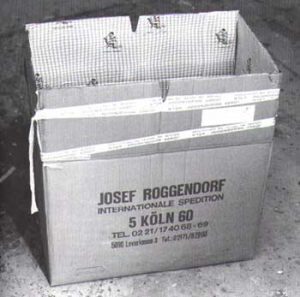 –Martin Kippenberger, “Rameau’s Nephew,” 1988
–Martin Kippenberger, “Rameau’s Nephew,” 1988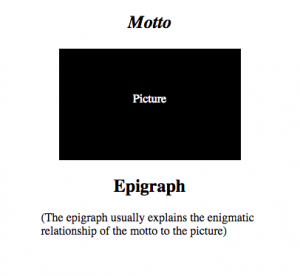 Catechism: Wide Image. The catechism of modernism (drawing on the Western Tradition) is articulated in Kant’s philosophy and Gauguin’s painting. The answers to the questions are specific to each person, and are generated during the composition of the wide image. Several posts are required to unfold this poetics, by means of which egents learn to actualize in their own projects the intelligence potential (latent) in the cultural archive. This archive in its global version functions for electracy the way Avatar functioned for orality: source of absolute knowledge (the project of Avatar Emergency was learning to receive this communication of Avatar). One of the first things that happens in transition from one apparatus to another is the mise en machine of the previous apparatus. As McLuhan observed, the content of the new medium is the old medium (literacy put oral mythologies into writing; electracy digitized the libraries). The remainder of the apparatus epoch is devoted to invention and diffusion throughout society of the new metaphysics (operating practices).
Catechism: Wide Image. The catechism of modernism (drawing on the Western Tradition) is articulated in Kant’s philosophy and Gauguin’s painting. The answers to the questions are specific to each person, and are generated during the composition of the wide image. Several posts are required to unfold this poetics, by means of which egents learn to actualize in their own projects the intelligence potential (latent) in the cultural archive. This archive in its global version functions for electracy the way Avatar functioned for orality: source of absolute knowledge (the project of Avatar Emergency was learning to receive this communication of Avatar). One of the first things that happens in transition from one apparatus to another is the mise en machine of the previous apparatus. As McLuhan observed, the content of the new medium is the old medium (literacy put oral mythologies into writing; electracy digitized the libraries). The remainder of the apparatus epoch is devoted to invention and diffusion throughout society of the new metaphysics (operating practices).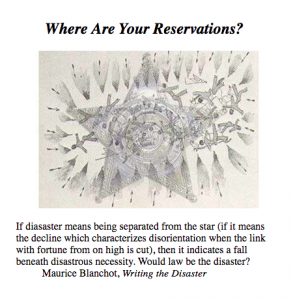 –Emblem. The translation of mystory into wide image is mediated by emblematics. The emblem (having the same structure as a generic advertisement), considering its historical relationship with allegory, expresses in condensed form the image of wide scope ( sinthome, Lacan) that emerges in the making of a mystory (it embodies the pattern of signifiers that repeat when the makers situation is mapped across the popcycle). Studio and Textshop exercises explore the form, including its history from its introduction in the Renaissance through to contemporary advertising. An advantage of the form is just this combination of archival presence and pop familiarity. Ulmer designed this emblem based on his mystory: Motto is “pithy,” aphoristic, allusive, to produce an evocative connotation when combined with the picture. The epigraph is informational, clarifying what is suggested in the motto-picture juxtaposition.
–Emblem. The translation of mystory into wide image is mediated by emblematics. The emblem (having the same structure as a generic advertisement), considering its historical relationship with allegory, expresses in condensed form the image of wide scope ( sinthome, Lacan) that emerges in the making of a mystory (it embodies the pattern of signifiers that repeat when the makers situation is mapped across the popcycle). Studio and Textshop exercises explore the form, including its history from its introduction in the Renaissance through to contemporary advertising. An advantage of the form is just this combination of archival presence and pop familiarity. Ulmer designed this emblem based on his mystory: Motto is “pithy,” aphoristic, allusive, to produce an evocative connotation when combined with the picture. The epigraph is informational, clarifying what is suggested in the motto-picture juxtaposition.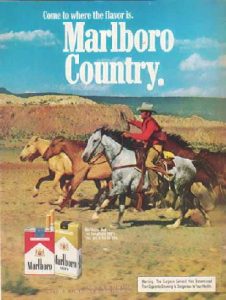 –Advertisement.The Marlboro Cowboy
–Advertisement.The Marlboro Cowboy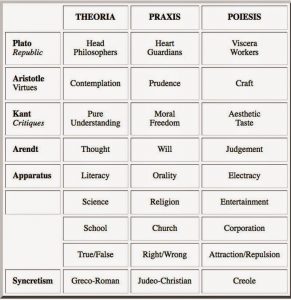
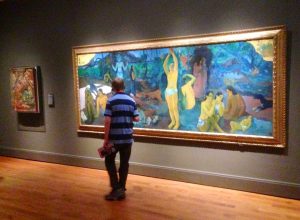 Capability. As these posts accumulate across an expanding set of categories, it is important to recall the focus of KE. Konsult learns the writing of the disaster in three dimensions: heuretics (invention), wide image (mystory), theopraxesis (capability). So far we have assumed some disaster addresses us, and devoted our attention to the heuretics of mystory, learning how to design an image of wide scope, source of our original hypothesis responding to disaster. Konsult takes up for electracy an ancient, even primordial drama: the striving to persist in one’s own being (to live), that Spinoza called Conatus, against the Overwhelming force of resistance, entropy, death. Heidegger characterized the drama as Riss, exploiting as was his craft German vocabulary, finding a term that means both Rift (split, break) and design (drawing). The drama of living derives from an irreducible opposition between Earth and World (nature and culture). Konsult is rift design (an assertion that must be developed elsewhere), taking up this enigmatic primordial experience of resistance encountered through living. Norbert Weiner, one of the inventors of cybernetics, defined life simply as anything that was negentropic, whether man or machine. We need to include in the drift of our posts a review of human capabilities, virtues, powers, the potentiality of egents which through education is realized in the service of well-being, thriving, living against disaster.
Capability. As these posts accumulate across an expanding set of categories, it is important to recall the focus of KE. Konsult learns the writing of the disaster in three dimensions: heuretics (invention), wide image (mystory), theopraxesis (capability). So far we have assumed some disaster addresses us, and devoted our attention to the heuretics of mystory, learning how to design an image of wide scope, source of our original hypothesis responding to disaster. Konsult takes up for electracy an ancient, even primordial drama: the striving to persist in one’s own being (to live), that Spinoza called Conatus, against the Overwhelming force of resistance, entropy, death. Heidegger characterized the drama as Riss, exploiting as was his craft German vocabulary, finding a term that means both Rift (split, break) and design (drawing). The drama of living derives from an irreducible opposition between Earth and World (nature and culture). Konsult is rift design (an assertion that must be developed elsewhere), taking up this enigmatic primordial experience of resistance encountered through living. Norbert Weiner, one of the inventors of cybernetics, defined life simply as anything that was negentropic, whether man or machine. We need to include in the drift of our posts a review of human capabilities, virtues, powers, the potentiality of egents which through education is realized in the service of well-being, thriving, living against disaster.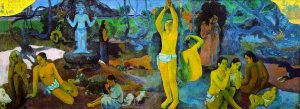
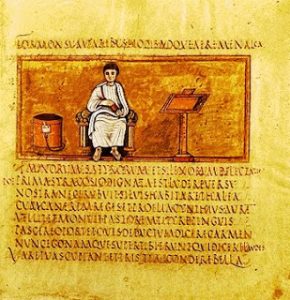 From Agent to Egent. These posts undertake a meandering trace of inquiry. KE reviews Ulmer’s work of the past four+ decades in order to understand it again, whole, as if given all at once, in a flash of insight. Egents undertaking konsult are interlocutors, collaborators, tutors. The purpose is to compose and design a discourse on method, in the tradition running from Plato’s Phaedrus to contemporary French philosophy, describing and testing a mode of learning native to electracy (the digital apparatus). The outline necessarily begins in literacy and school. The coming pedagogy is also explored elsewhere, in the context of EmerAgency (conceptual konsulting, without portfolio), addressing the curriculum reform in progress at MIT as well as Digital Humanities institutionalization. The discussion across disciplines concerns TPE (Theopraxesis)–a shared interest in learning how to learn in digital civilization, using heuretics, the logic of invention.
From Agent to Egent. These posts undertake a meandering trace of inquiry. KE reviews Ulmer’s work of the past four+ decades in order to understand it again, whole, as if given all at once, in a flash of insight. Egents undertaking konsult are interlocutors, collaborators, tutors. The purpose is to compose and design a discourse on method, in the tradition running from Plato’s Phaedrus to contemporary French philosophy, describing and testing a mode of learning native to electracy (the digital apparatus). The outline necessarily begins in literacy and school. The coming pedagogy is also explored elsewhere, in the context of EmerAgency (conceptual konsulting, without portfolio), addressing the curriculum reform in progress at MIT as well as Digital Humanities institutionalization. The discussion across disciplines concerns TPE (Theopraxesis)–a shared interest in learning how to learn in digital civilization, using heuretics, the logic of invention.